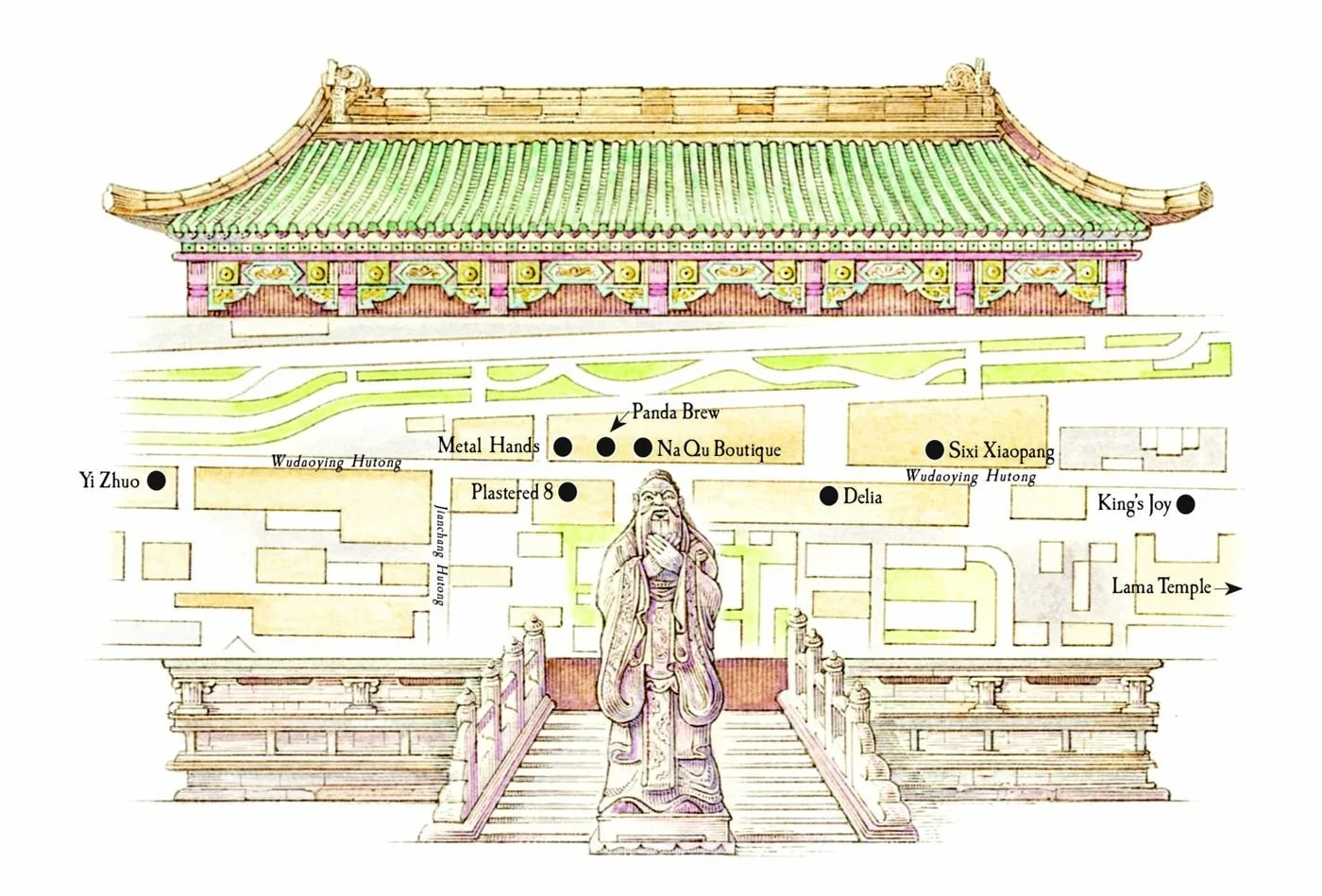A stroll along Wudaoying Hutong
A piece I wrote for the Ritz-Carlton’s JOURNEY magazine, part of their ‘Great Streets’ series.
A stroll along this gentrifying Beijing lane reveals the many faces of China’s historic yet swiftly modernising capital.
‘Hutong’, the grey-brick lanes that pattern central Beijing, were once home to Imperial elites living it up in quadrangle mansions designed according to feng shui. Today, after decades of decline, these chequerboard alleys are in the push and pull of gentrification. Wudaoying, bookended between the magnificent Lama Temple and the now vanished Andingmen, a gate in Beijing’s Ming-era city wall, is the city’s most enticing example of a revived commercial hutong.
Yi Zhuo (84 Wudaoying Hutong), a purveyor of delicate porcelain tea ware and ornaments, has a tranquil, white-walled teahouse attached. If coffee is your preferred caffeine-hit, Metal Hands (65 Wudaoying Hutong), founded on the alley, is one of Beijing’s finest third wave coffee roasters, with perfect pour-overs and dreamy cheesecake. Or for a more potent pick-me-up, Panda Brew (61 Wudaoying Hutong), an all-Chinese craft brewer, entices with its locally-inspired ales paired with pizza.
Plastered 8 (60 Wudaoying Hutong) is famed for clothing designs that subvert Beijing iconography – everything from retro road signs to Peking opera. Playful souvenirs abound here, including cans of ‘Beijing Air’ to take home. A more refined apparel experience, Na Qu Boutique (59 Wudaoying Hutong), crafts womenswear that, while contemporary, draws upon the golden age of Shanghai style using elements of the qipao, a one-piece Chinese dress dating back to the 17th century. If it’s actual vintage you’re seeking, Wudaoying is known for its many retro clothing and objects d’art emporiums. Delia (52 Wudaoying Hutong) is a treasure trove of 1970s Chinese clocks, Chairman Mao busts and pictures alongside used Gucci dresses and handbags.
There are many spots to eat along the lane, but one of the most atmospheric is Sixi Xiaopang (29 Wudaoying Hutong) which opens into a leafy courtyard serving traditional Beijing hot pot, a meal where diners scald wafer-thin sliced mutton and beef, together with raw vegetables and tofu, into cauldrons of bubbling soup. Vegetarians, on the other hand, won’t want to miss King’s Joy (2 Wudaoying Hutong), serving beautifully presented dishes in a plant-strewn, light-filled space. The food, inspired by Buddhism, imitates meat using mushrooms, wheat gluten and other healthful fare. From the restaurant you can observe the graceful arched roofs of the Lama Temple (12 Yonghegong Dajie), Beijing’s most resplendent religious site, beckoning you into its incense-infused folds.
